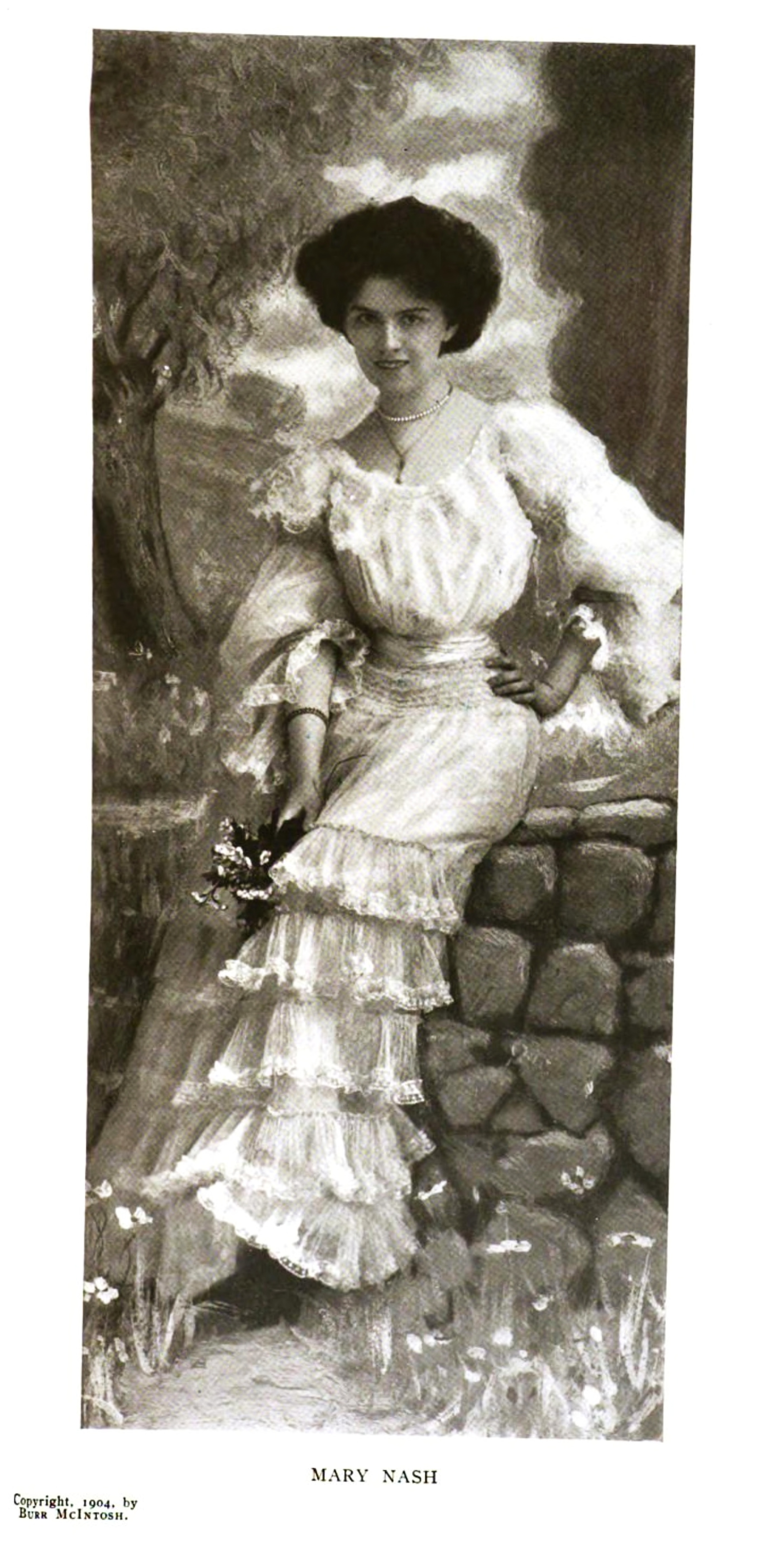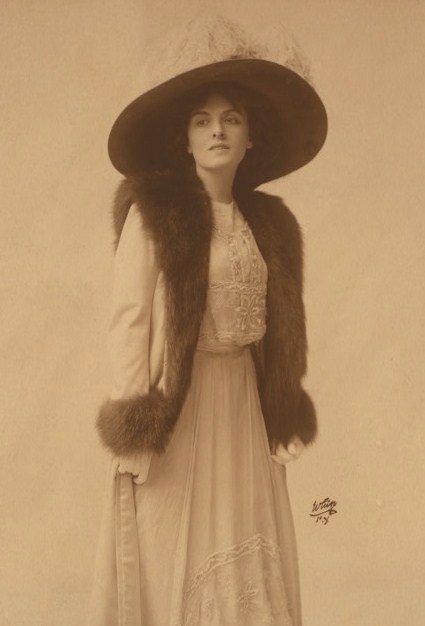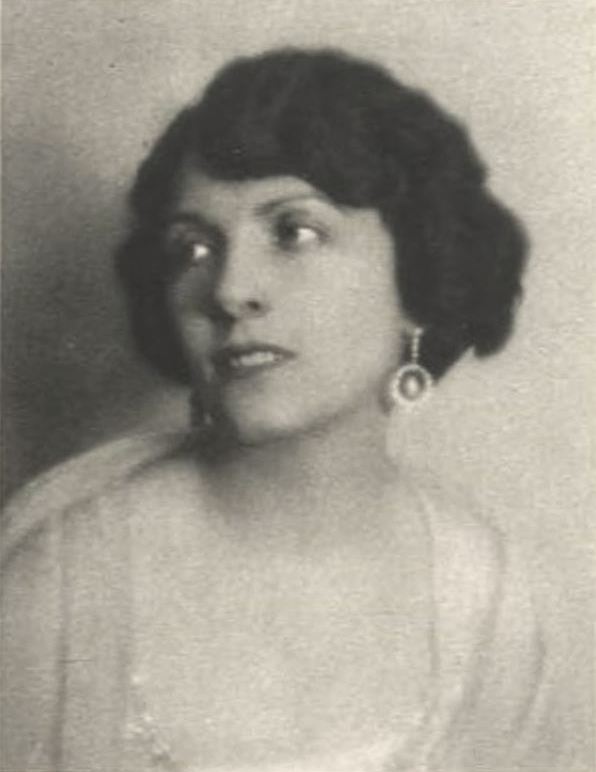1. Overview
Mary Nash, born Mary Honora Ryan on August 15, 1884, was a prominent American actress whose career spanned over 40 years, encompassing significant achievements on both the stage and in Hollywood films. Known for her versatility, she transitioned from early appearances in vaudeville and acclaimed Broadway roles to a notable career in motion pictures, where she often portrayed complex characters ranging from sympathetic figures to formidable villains. Nash passed away on December 7, 1976, at the age of 92, leaving behind a legacy marked by her impactful performances in various cinematic and theatrical productions.


2. Early life and background
Mary Nash's early life laid the foundation for her distinguished acting career, marked by a significant change in her family name and a comprehensive education focused on dramatic arts.
2.1. Birth, family, and name change
Mary Nash was born as Mary Honora Ryan on August 15, 1884, in Troy, New York. She was the elder daughter of James H. Ryan, a lawyer, and Ellen Frances Ryan (née McNamara). She had a younger sister, Florence Nash, who also pursued a career as an author and actress. Following the death of their father, their mother married Philip F. Nash, a prominent executive in vaudeville booking. Both sisters adopted their stepfather's surname, Nash. This name change proved fortuitous for Mary, as it helped avoid any potential professional confusion with another actress named Mary Ryan, who had already gained considerable popularity on Broadway at the time.
2.2. Education
Mary Nash received her early education at the Convent of St. Anne in Montreal, Canada. After completing her studies there, she pursued formal training in acting at the esteemed American Academy of Dramatic Arts, a renowned institution for professional theatrical education. Nash was a Catholic.
3. Career
Mary Nash built an extensive career as an actress, achieving success in both the theatrical world of New York and London, and later establishing herself in Hollywood films.
3.1. Stage career
Nash's theatrical career began with brief appearances as a dancer at the Herald Square Theatre in 1904. She made her formal off-Broadway debut on Christmas Day in 1905, playing Leonora Dunbar in James M. Barrie's play Alice-Sit-by-the-Fire. In this production, she shared the stage with the legendary actress Ethel Barrymore, an association that continued for two years. During this period, Nash and Barrymore acted together in productions such as Captain Jinks and The Silver Box. Nash's stage work extended to London, where she earned acclaim for her performances. Her final appearance on Broadway was in 1933, starring as Cassie in a production of Uncle Tom's Cabin, alongside notable actors Otis Skinner and Fay Bainter.

3.2. Hollywood film career
Mary Nash transitioned to Hollywood in 1934, commencing a film career that spanned until 1946. During this period, she appeared in 18 motion pictures. She was frequently cast in roles that initially presented her as seemingly mild-mannered women who would then turn vicious when challenged, a characteristic seen in her performances in films like College Scandal (1936) and Charlie Chan in Panama (1940). However, she also demonstrated her range in more sympathetic roles, such as the long-suffering wife of the blustering capitalist J.B. Ball in Easy Living (1937). In the 1940 film Gold Rush Maisie, Nash portrayed Sarah Davis, a patient and forbearing wife and mother whose family was forced to abandon their Arkansas farm due to the Dust Bowl and Great Depression, leading them to spend five years traveling the country in search of seasonal work.
Nash is particularly remembered for her portrayal of villainous characters in two films starring child actress Shirley Temple. She played Fraulein Rottenmeier in Heidi (1937) and later appeared as Miss Minchin in The Little Princess (1939). In 1940, she played Margaret Lord, the socialite mother of Katharine Hepburn's character, in the acclaimed movie adaptation of The Philadelphia Story. Her filmography also includes a supporting role in the 1936 Academy Award-winning film Come and Get It and a featured role in the 1944 film In the Meantime, Darling. Her final film role was in Swell Guy (1946).
4. Personal life
On October 19, 1918, Mary Nash married José Ruben, a French-born actor and director (1884-1969). The couple divorced sometime after 1923, a period when Nash was still residing with her sister, Florence Nash.
5. Death
Mary Nash died in her sleep at her home in Brentwood, California, on December 7, 1976. She was 92 years old at the time of her passing. Her cause of death was attributed to disease. Nash was interred at St. Agnes Cemetery in Menands, New York.
6. Filmography
Mary Nash appeared in the following films throughout her Hollywood career:
| Year | Film | Role | Director | Notes |
|---|---|---|---|---|
| 1915 | The Unbroken Road | Constance Turner | ||
| Tides of Time | Mary Martin (in the Five Ages of Woman) | Short | ||
| 1916 | Arms and the Woman | Rozika | George Fitzmaurice | |
| 1934 | Uncertain Lady | Edith Hayes | Karl Freund | |
| 1935 | College Scandal | Mrs. Fresnel | Elliott Nugent | |
| 1936 | Come and Get It | Emma Louise | William Wyler | |
| 1937 | The King and the Chorus Girl | Duchess Anna of Elberfield | Mervyn LeRoy | |
| Easy Living | Mrs. Ball | Mitchell Leisen | ||
| Heidi | Fraulein Rottenmeier | Allan Dwan | ||
| Wells Fargo | Mrs. Pryor | Frank Lloyd | ||
| 1939 | The Little Princess | Amanda Minchin | Walter Lang | |
| The Rains Came | Miss Mac Daid | Clarence Brown | ||
| 1940 | Charlie Chan in Panama | Miss Jennie Finch | Norman Foster | |
| Sailor's Lady | Miss Purvis | Allan Dwan | ||
| Gold Rush Maisie | Sarah Davis | Norman Taurog | ||
| The Philadelphia Story | Margaret Lord | George Cukor | ||
| 1941 | Men of Boys Town | Mrs. Maitland | Norman Taurog | |
| 1942 | Calling Dr. Gillespie | Emma Hope | Harold S. Bucquet | |
| 1943 | The Human Comedy | Miss Hicks | Clarence Brown | |
| 1944 | The Lady and the Monster | Mrs. Fame - the housekeeper | George Sherman | |
| Cobra Woman | Queen | Robert Siodmak | ||
| In the Meantime, Darling | Mrs. Vera Preston | Otto Preminger | ||
| 1945 | Yolanda and the Thief | Duenna | Vincente Minnelli | |
| 1946 | Monsieur Beaucaire | The Duenna | George Marshall | |
| Till the Clouds Roll By | Mrs. Muller | Richard Whorf | ||
| Swell Guy | Sarah Duncan | Frank Tuttle | Final film role |
7. Legacy and reception
Mary Nash's career was marked by both critical acclaim for her dramatic range and a notable pattern in her film casting, particularly in the later part of her career.
7.1. Positive reception
Throughout her career, Mary Nash was praised for her acting abilities, particularly during her time on the London stage where she received significant acclaim. Her performance as the long-suffering Mrs. Ball in the 1937 film Easy Living was highlighted as one of her most sympathetic and impactful roles, showcasing her capacity to evoke empathy from audiences despite often being cast in less favorable parts. Her dramatic depth also allowed her to deliver memorable performances in a variety of stage productions, cementing her reputation as a versatile and skilled actress.
7.2. Criticism and controversies
While generally well-regarded, Mary Nash's Hollywood career saw her frequently cast in specific types of roles, which contributed to a particular public perception. She was often chosen to portray characters who, despite appearing mild-mannered at first, would reveal a vicious or challenging side, as exemplified in films such as College Scandal (1936) and Charlie Chan in Panama (1940). This pattern of casting extended to her notable villainous roles in two films starring Shirley Temple, where she played the strict Fraulein Rottenmeier in Heidi (1937) and the cruel Miss Minchin in The Little Princess (1939). These repeated portrayals solidified her image as an effective, if sometimes typecast, antagonist, reflecting a critical perspective on the limited range of roles she was offered in Hollywood compared to her broader stage work.